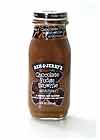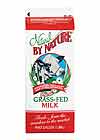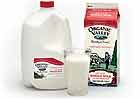
The Wal-Mart Effectis the title of a book written last year by journalist Charles Fishman. The book, Fishman’s first, describes the myriad impact that the world’s largest retailer has had on business and many other aspects of our lives.
The Wal-Mart effect touches the lives of literally every American every day. Wal-Mart reshapes the economic life of the towns and cities where it opens stores; it also reshapes the economic life of the United States - a single company that steadily, silently, purposefully moves the largest economy in history. Wal-Mart has become the most powerful, most influential company in the world.
Who knew shopping would turn out to be so important?
Packaging gets a mention in Fishmans’ book. And it’s hard to talk about packaging these days without mentioning sustainability, thanks in large part to the big general store from Bentonville, Ark.
“Wal-Mart (along with 200 external packaging leaders across the value chain) has developed a Packaging Scorecard with key metrics that show the impacts of packaging,” pennedDairy Foodscolumnist Mike Richmond in his February 07 Packaging Points column. “The metrics include: Distance to transport, cube utilization, greenhouse gas emissions, renewable energy, product/package ratio, package recovery rates, material type, recycle content and package innovation or improvement. The goal is to provide a 5% material reduction by 2013 that will result in $3.4 billion in savings with comparative savings in energy, greenhouse gases (CO2), and more.”
As of January, Wal-Mart Suppliers, including those who manafacture dairy products, have had to report their packaging data to Wal-Mart, and they will be measured in 2008 using those metrics. Those with the best scores will get the best positions in Wal-Mart stores.
With that, sustainability has leapfrogged right to the front of the line to join portability, convenience, shelf appeal, tamper evidence and the other usual supects that make up the of the leading attributes of successful dairy packaging.
Of course packaging has been part of the transformation of dairy in the past two decades from a purely take-home comodity to a beverage and a snack. The chug, the zipper pouch, the aseptic brick, and the squround have each done more than just contain their respective products safely, they have become part of the value proposition of each product.
So, for a dairy processor selling to Wal-Mart or marketing organic and natural dairy products, the choosing the right type of package and the right material for each product has just gotten even more complicated.

Paper or plastic?
For years, since well before Wal-Mart and Whole Foods were on the scene, milk has been moving from paper to plastic. If you go all the way back to the 1950s, it was moving from glass to paper. There are a number of advantages and disadvantages to each, involving portability and weight, durability, light and oxygen protection, and flavor leaching. That’s before you even start talking about sustainability.Here’s an experiment. Ask someone who knows a little bit about dairy packaging which type of packaging has the best environmental profile. Now watch their body language. Do they shift on their feet, fold their arms while gathering their thoughts, maybe scratch their head?
Shouldn’t come as a surprise, because it’s a tough question to answer. At first glance, it might seem that paperboard is the obvious answer. And that could be the right anwer. It’s a renewable resource, it’s lightweight, it’s biodegradable and recyclable, er... sort of.
The sticking point with paperboard is that even in its simplest form there is a layer of film or two to protect the product, and that portion of the material is not usually biodegradable. The good news is that even for the most complex paper based products the laminates are becoming easier to remove from the paper substate.
Gabletops are the most prevelantly used package for organic milk primarily because paperboard has the connotation of being a more natural material.
As organic milk sales have increased, the gallon plastic jug has also bcome very popular. It offers a full gallon in one package, and, as with conventional milk, that usually means the milk is sold at the lowest price point by volume, everything else equalled.
But still, it’s plastic, which is made from petroleum. Or is it? For several years now plastic-like polymers made from corn or soybean have been available for use in the manufacture of food and beverage packaging. As of late there have been several applications for milk bottles, and even for shrink sleeve labels. Some argue that because these products are extruded they still have lower environmental score than other materials like paper.
Even before going to a renewable, crop-based polymer, there are numerous considerations about which kind of plastic is best for a particular product.
Hansen Beverage Co., Corona, Calif. recently launched six varieties of its Natural tea line in 16-ounce long-neck PowerFlex polyethylene terephthalate (PET) bottles from Amcor PET Packaging. The PET containers were introduced to help bring a new, “clear” look to the brand. Hansen’s Natural line started out in glass and then moved to polypropylene (PP) a few years ago before Hansen found a new paneless PET that met its needs.
Speaking of PET, material suppliers in Europe and elsewhere are continually working on developing materials to provide clear PET bottles that are stronger and lighter.
Then there’s glass. It doesn’t leach any off flavors, it keeps milk cold. Glass also offers some nostalgic appeal, particulalry when it is home delivered. A handful of companies have had enough success with home delivery and glass packaging in general that glass has shown some measureable growth, although it still has just a tiny percentage of the milk market.
But when you think about sustainability, the situation for glass gets tricky. It’s made from natural materials so that its renewable, and recyclable. It’s even reusable, but the washing and sanitizing of milk bottles takes away some of the halo.
The real problem with glass is that it weighs a ton. Transport it any kind of distance beyond a couple hundred miles and it really loses its appeal.
It will be interesting to see if one of these materials ever emerges as the clear favorite for sustainability, but for now the answer may be different for each dairy processor, and for each application.

Flash and functionality
Shelf appeal continues to be one of the biggest drivers in packaging innovation for any consumer goods marketer, including the dairy man. Lactalis USA recently upgraded the packaging for its rondelé cheese spreads, which are sold under the Président umbrella brand.Lactalis knows these products are good, and experts agree. At the U.S. Championship Cheese Contest held in March, rondelé earned a Best of Class awards or second for Garlic & Herbs, Artichoke & Garlic, Light Garlic & Herb, and Blue Cheese flavors.
The goal of the packaging makeover was to make the the packaging as enticing as the savory tang of Garlic & Herbs, the bite of Chipotle & Tomato, or the punch of Peppercorn Parmesan.
The new packaging, which released in April, features the addition of the Président logo and refreshing graphics that draw the eye of food adventurers looking to indulge in a full range of gourmet cheese flavors.
Each facet of the new design was driven by months of consumer-based research. The new packaging was designed to make it easier for the consumer to find the quality and wholesome rondelé in the cluttered cheese cases of the supermarket deli.
Company research indicated that the look of the new deli cup line packaging is so enticing that it generated greater purchase interest in non-users, and a significant number of targeted shoppers claimed the packaging had a positive effect on their purchase consideration.
When Organic Valley Family of Farms, and its packaging partner Tetra Pak developed a single-serve organic milk in Tetra Prisma Aseptic carton, they knew they had a home run product, but they might not have seen it as a way to bring baseball and milk together.
This summer, fans of the Wisconsin Timber Rattlers, single A affiliate of Major League Baseball’s Seattle Mariners, are sampling the products at the old ball park.
The ambient features of Tetra Pak’s containers were recognized by the ball club as an innovative solution for the well-known challenges of storage, spoilage and distribution of sensitive products such as milk.
“Our fan surveys show that parents want more healthy choices at the ballpark, and Organic Valley’s flavored milk tastes great, and is an all natural product,” said Ryan Grossman, food/beverage mgr. for the Timber Rattlers. “The single-serve milk cartons are easy for kids to open, carry and consume, which is one less thing for parents to worry about while enjoying the action during the game.”
Products can be purchased from concession stands, and from roving vendors. The kids’ play area adjacent to the stadium has been named the Organic Valley Kids’ Zone for the 2007 season, and a nearby kiosk will dispense the single-serve milk cartons. Several days are slated for all-fan giveaways with free samples, discount coupons will be distributed for redemption at local grocery stores, and autograph Sundays will be sponsored by Organic Valley.
Single and multipacks of the Prisma containers in white and chocolate are readily available at major grocers throughout the United States.
A couple years ago Missouri dairy farmer Leroy Shatto decided to go vertical and open his own small dairy processing plant. Shatto’s Dairy markets its milk in the Kansas City market as a local, farm fresh product, that’s not made with rBST. Shatto chose glass bottles from Stanpac Inc., reasoning that the glass keeps his milk colder and fresher longer.
“We have customers who say they can taste the plastic or are allergic to plastic milk jugs,” Shatto told a local newspaper. “I have a lady from Nebraska who drives clear down to the Hy-Vee in St. Joe to buy our milk because she says her kids can’t drink anything else. I never dreamt of that part of the business.”
A similar operation in Ohio, Hartzler’s Family Dairy, was opened in 1996 by a farming family which now has more than 40 years experience in organic farming. Hartzler’s also chose glass bottles from Stanpac for the milk it sells in Akron and Cleveland.
Gordo’s Cheese Dip, produced by Kachwa Food Group, Lake City, Ga. is a very successful product in the Southeast that has only recently entered the national market. Originally sold only through food service, Gordo’s was transitioned to retail in 2004, says Kachwa v.p. Ward Sweat.
For help, Sweat turned to Canadian-based IPL, which was already providing the 21⁄2 -gallon containers for the food-service version of Gordo’s. After concluding that a 16-ounce container was the optimal size, IPL and Kachwa went to work. Kachwas worked with a separate company on a label, but was not happy with the results, so IPL suggested that the company try in-mold labeling.
“The container was beautiful,” Sweat says. “The artwork just seemed to leap off the front, the colors are vibrant, and the increased print coverage actually makes the container look bigger than it is. I cannot tell you how many people I have seen in stores grab the package and put it up to their eyes to study it. I have actually heard people say, ‘Look at this package!’”
Like most other food manufacturers and marketers, Kroger is working to develop healthy choices for children. One outcome of those efforts is Disney Magic Selections, a 5.5-ounce drinkable lowfat yogurt launched earlier this year.
For a shrink label that would adequately deliver the colorful energy of Disney’s animated characters, Kroger worked with SleeveCo, Dawsonville, Ga. The results are Incredible.

...but even top organic milk marketers use a variety of materials, including plastic.
Secondary, the other "S" word
At Ben & Jerry’s Vermont production facilities, the primary ingredients, cream and milk, arrive in a tanker truck. But some of its packaging comes in corrugated boxes-lots and lots of boxes. The same is true for most dairy processors. Caps come in boxes, cups, maybe labels.Well, Ben & Jerry’s has found a better-than-ordinary solution for what to do with all that cardboard through a Canadian company called Rebox. Established in 1990, Rebox recycles but alsoreusescorrugated cardbaord boxes. For Ben & Jerry’s that’s primarily the boxes that contain lidstock.
“We’ve been working with Rebox since 1990 when Rob Josephson and his partner stopped by our Waterbury, Vt. plant and knocked on the back door to talk to anybody about the possibility of buying our boxes,” says Rob Michalak, social mission dir., at B&J. “Working with Rebox has always been easy. We can handle the boxes in the manner that is easiest for us, taking into consideration both ergonomics and safety for our employees. Rebox has never asked us to change our process to accommodate them. They will pick up a full trailer within 48 hours.”
Michalak estimates that B&J’s participation between 1991 and 2006, has saved more than 80,000 trees.
Sidebar: Reid's Dairy Differentiates with New Diamond Cartons
Some Canadian shoppers are seeing a new shape when they reach for a milk carton. Reid’s Dairy, Belleville, Ont. is the first in North America to package milk in 250 ml mini Diamond cartons, a new Pure-Pak carton produced by Elopak Canada Inc.The Diamond carton goes a step beyond the standard gable-top package, adding unique curved top and side panels that provide more merchandising area and help the package stand out on the shelf.
“As an independently-run company, we need to be different from our competitors and stand out by being one step ahead,” said Stephen Quickert, pres. of Reid’s Dairy. “The innovative Diamond shape, married to the quality print process provided by Elopak in Montreal, helped us create the right image with new branding that enhances the Reid’s identity.”
Reid’s branding features curved red panels to match the familiar Reid’s Dairy banner, and high-quality photographs of active youngsters with splashing milk. The graphics retain the dairy’s “Shaker the cow” character and the castle turret that identifies the plant to everyone in the Belleville community and the surrounding area.
Reid’s switched to the new mini Diamond for skim, 2%, 1%, and chocolate milk after a successful launch of its Reid’s Naturals premium juices and drinks in Elopak’s Pure-Pak Curve carton, which features the same curved fifth panel down the side and the traditional gable-top shape on top. The Reid’s Naturals line debuted last June with orange juice, apple juice, iced tea, and lemonade.
To find out more about these new products from Elopak, visitwww.elopak.us.com.